Here is the all-new electric ARC Vector, arguably the most advanced motorcycle, with hub steering, carbon swing-arm front and rear, no conventional frame, Öhlins suspension, Brembo Stylema brakes, and fully electric. Hand-made in England, with its price starting at £90,000 (Rs 82.80 lakh).
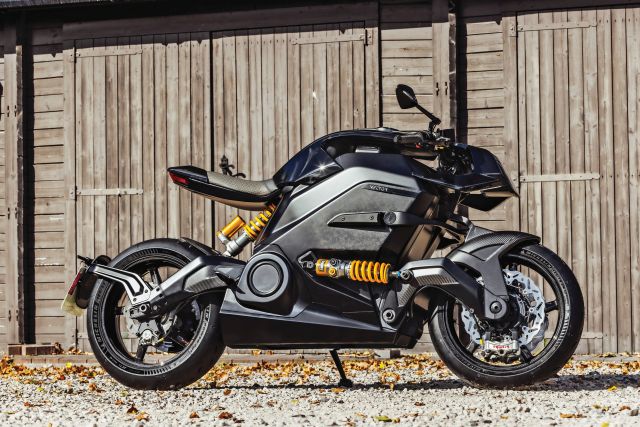
Story: Adam Child ‘Chad’
Photography: Jason Critchell
ARC is the brainchild of CEO Mark Truman, who set out to create something special: the world’s most advanced electric motorcycle. To create a bike free of the constrictions of noise, emission, heat, exhaust routing, and a thousand other conventional petrol bike limitations. He started with a blank piece of paper, then let his imagination and brilliance run wild.
The ARC Vector was revealed to the public at EICMA back in 2018, stunning the motorcycling world with its dramatic hub-centre steering and claimed range (436 kilometres) and recharge time of just 40 minutes. However, the company went into administration in 2019, when key investors removed themselves from the project.
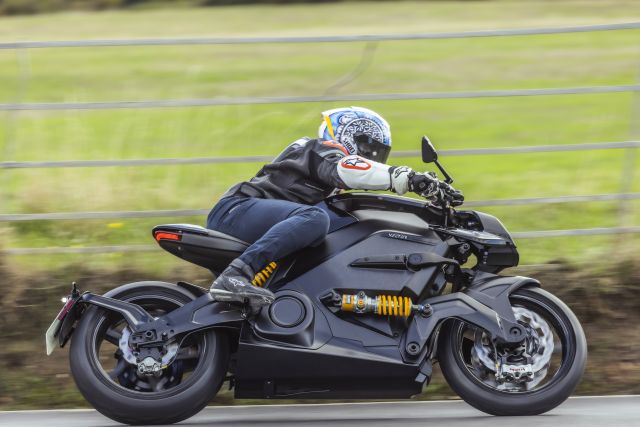
Unperturbed, Mark and his company bounced back and earlier this year conducted the bike’s final testing, with former BSB and MotoGP racer James Ellison at the helm.
With the first bespoke and British-made Vectors now reaching customers, we took one of the very first bikes to leave the factory for a quick spin close to ARC headquarters near Coventry in England. The ARC is unique. There is no conventional frame; the chassis is the housing for the battery and motor, similar to Ducati’s Panigale and new MotoE race bike.
Hub-centre steering allows a very steep head angle of 20 degrees compared to a normal sports bike’s 24 to 25 degrees. The pivot point of the front shock is below the front wheel spindle, which, unlike other hub-steering models, allows the front to dive slightly like a conventional telescopic fork. The hub steering also allows the ARC to run a light spring at the front which can cope with the weight (235 kilograms) better than conventional forks.
Both rear and front arms are carbon-fibre, as are the wheels (by BST). There are Brembo Stylema brakes up front, a full carbon seat unit, keyless ignition (via a wrist strap key), and belt drive. There is a digital dash on top of the dummy fuel-tank which houses the charging ports.
Despite having multiple riding modes, our test bike did not have a finished suite of rider aids installed, which will include lean-sensitive traction control and conventional ABS developed in partnership with Continental.
In the not-too-distant future ARC also plans to produce an interactive ARC Zenith helmet with British firm Hedon. The helmet will connect to the bike via Wi-Fi and show a head-up display featuring an array of voice-activated performance-related graphics and navigation assistance. A jacket is also part of the company’s AE program and will connect to the bike and the rider via Wi-Fi and will interact with the rider; for example, vibrating when the ABS or traction control is activated.
We took the £90,000 (Rs 81.70 lakh) electric exotica for a spin around ARC headquarters in the Midlands of the UK to get a taste of the future. Hub-centre steering is nothing new and is still used by Bimota, while Yamaha famously had a crack at it with their GTS 1000 in 1993. In fact, books have been written on the advantages and disadvantages of alternative front end suspension systems compared to conventional telescopic forks. But the ARC system is different from most previous designs.
The crucial element is the pivot point of the front swing-arm, which is below the front wheel spindle, which means some weight can be transferred to the front end, allowing the front to dive reassuringly under braking, adding that almost conventional feel missing in most hub-steering bikes. The other advantage is the ARC can run a steep steering head angle of just 20 degrees (most sports bikes have 24- to 25-degree head angles). The ARC system also allows a lighter spring for the Öhlins front shock.
But, yes, there are disadvantages, the bike’s cost being an obvious one. Development was extensive and expensive. Then there is the actual cost of production: the front swing-arm is carbon-fibre while the front mud-guard, which is a structural component, is also one complete carbon unit. The other main disadvantage is a large turning circle that makes the Vector a touch awkward in town.
But ARC’s development team knew an electric superbike would be heavy and that a hub-centre steering system, which separates the braking, steering, and suspension functions would, dynamically, manage that weight better than traditional forks—and allow a steep and sporty steering head angle. They were also unconstrained by normal design limitations: without a radiator, waterpipes, front exhaust routing, and engine heat to worry about, the designers and engineers had a relatively free run at the project.
Initially, the 240-kg superbike does feel heavy, especially when you are moving it around and throwing a leg over the 825-millimetre carbon seat for the first time. Other electric bikes I have tested, which are considerably heavier, have a reverse or crawler gear, which the ARC does not. However, once the carbon BST wheels start turning, that weight diminishes rapidly.
That steep rake angle makes the ARC feel lighter than it actually is and it took a few kilometres to re-calibrate as I was constantly turning too quickly and hitting the apex early, then picking up the bike and having a second stab at it. But the more I rode the ARC, the more we clicked and I found myself using less input at the bars and pegs to make it turn.
Fact is, the Vector steers faster than any other electric superbike I have ridden, but it is far from skittish. With suspension and braking forces separated and a relatively light spring controlling the ride, you can feel the front end reacting to bumps and imperfections—the ride is almost plush—but there is not a huge amount of drive or weight transfer either. The rear suspension uses a directly mounted Öhlins unit, which is on the firm side. You really feel this at low speed and over imperfections around town, but once up to speed, it comes into its own.
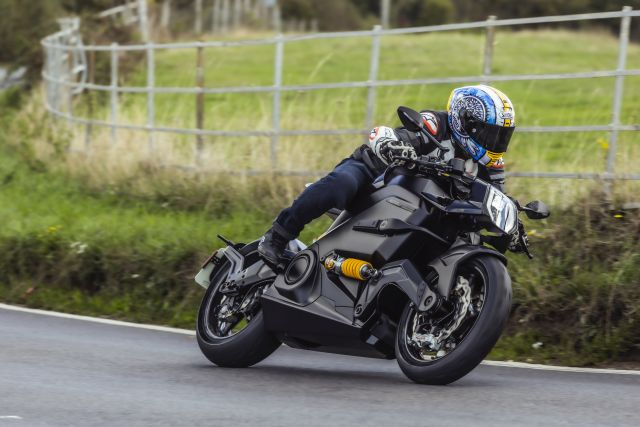
Riding the ARC is a little like riding a proper race bike on the road. Generally, race bikes have less squat and suspension movement than road bikes and that is the same with the Vector. While that does not feel great at slow speed or over large bumps and road imperfection, once you are up to speed and putting forces through the suspension, it moves into its design window and begins to work accordingly. Like a race bike on the road, the Vector does not want to be ridden slowly; above 65-80 km/h is when the suspension works. Stability is absolute and long flowing corners are its natural hunting ground. Once the bike and rider are dialled in, it is an incredibly rewarding bike to ride briskly.
But like a race bike in town, it is not great; the rear is a little harsh and the steering lock is limited. Add a tall-ish seat and that instant torque as you crack open the throttle and I can see most owners heading for the countryside or track immediately. However, because each bike is bespoke, suspension and power settings can be tailored to match the customer’s requirements. Theoretically, a wealthy owner who wishes to ride his/her ARC around Monaco rather than Mugello can have it tweaked to suit.
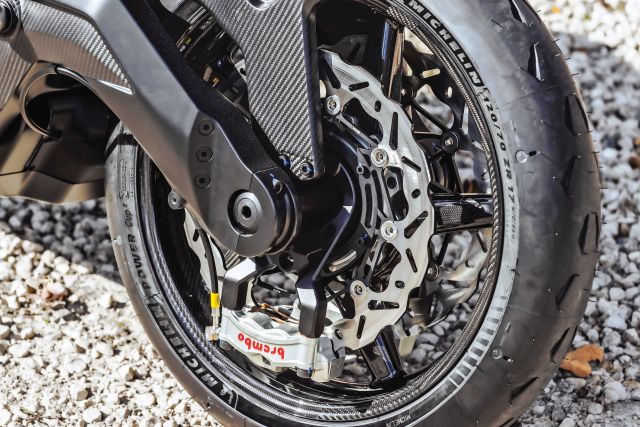
Stopping the Vector’s 235 kg is down to two Brembo Stylema Monobloc calipers gripping 320-mm discs. The rear is also a Brembo item, this time a 240-mm disc. As mentioned, our test bike did not have ABS fitted but customers’ bikes will have conventional ABS. It will also be possible to deactivate the ABS completely, should you wish to in Sports mode on the top-spec AE model.
Braking takes a little getting used to, especially with so little engine braking. The front dives a little; unlike some HCS systems you can feel the front tyre loading as weight transfers forward, but not as much as conventional forks. Meanwhile, the rear brake lever on the handlebar like a scooter is very effective.
At low speed, I do not think I used the front brake at all as the rear set-up is so effective. It is only out of town, when you are using all that torque and having fun, do you start to brake normally.
When you brake heavily, that positive but subtle suspension movement helps you feel the front tyre’s contact patch. There is none of the detached sensation you can experience on bikes with funny front ends. I would really like to try the ARC on track, to nibble at the boundaries, but as this was an early road test only, all I can truly say is that the quality Bembo items are up for the job on the road.
The ARC’s permanent rare earth magnet, AC motor is cleverly hidden by a dummy belly pan, which houses a channel that directs cool air to the small, rear-facing radiator, which cools both the motor and inverter. The motor produces a peak of 173 Nm of torque and 87 kW (118 hp), directed to the back wheel via a belt drive (not a chain, which was originally shown on the concept bike).
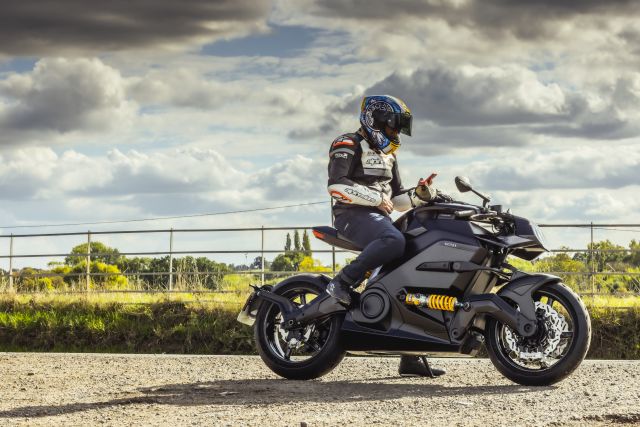
The battery has a capacity of 16.8 kWh (using Samsung Battery Cells) and is housed in a monocoque carbon shell, to which the front and rear bespoke carbon suspension is bolted. There is no conventional frame.
The Vector’s headline range is a quoted 436 km, but Mark and the team say that, realistically, about 320 km could be expected during normal riding and 193 km during aggressive riding or with a motorway stint. On track, with former MGP racer James Ellison putting in impressive lap-times, 97 km was the worst recorded result, which is impressive.
Top speed is limited to 200 km/h and ARC quotes a 0-100 km/h time of 3.1 seconds. Recharge time from 0 to 90 per cent is only 40 minutes on a Type 2 rapid DC fast charger. (This is the only way to charge the ARC; there is no home three-pin system.) The ARC is fully road-legal and meets Euro5, which is not as strict for electric-powered vehicles as there are no noise or emission targets to meet.
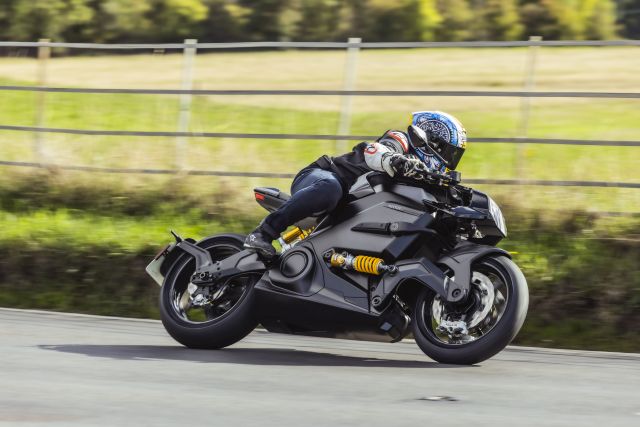
Despite almost spending about 30 per cent of my riding time testing electric bikes these days, I am still getting acquainted with riding powerful electric superbikes. Today, that initial anxiety is amplified by the value and uniqueness of the ARC. I am the very first person outside the company and test team to be allowed on the £100,000-plus (Rs 90 lakh-plus) bike. To add to my worries, the TC and ABS have not yet been finalised for production, so there are no rider aids today. Luckily, the weather is kind and ARC HQ is surrounded by some great roads.
There are no gears, of course, and the instant response of direct torque always takes a little while to get used to. The ARC also runs a handlebar-mounted back brake, like a scooter.
Engine response off small throttle openings is a little sudden compared to a petrol-powered superbike (even in the lower power Urban mode) and when you accelerate rapidly, much as you would on a conventional superbike like a BMW S1000RR, it is hard not to stop your left foot hunting for a gear lever. You do not have to wait for peak revs and it is very quiet, too. In fact, from the lights or from 50, 80, 100 km/h, it really is just a case of twist-and-go. Except it goes very fast. In wet or cold conditions, traction control will be needed and I could feel the front wheel go light on occasions over crests.
Overtaking is effortless, with no changing down gears to access peak torque necessary. It is a strange sensation passing cars with such a consummate lack of effort and in near silence.
ARC has deliberately dialled in minimal engine braking, meaning there is very little re-gen. Some electric bikes have strong engine braking and re-gen to deliver power back to the battery to extend range, but the ARC Vector does not. This gives it something of a two-stroke feel that helps you roll and flow into corners and is a characteristic I came to appreciate when I raced an electric bike at the Isle of Man TT. I assume comfort was never too high on the design brief at ARC, but, as mentioned earlier, each bike is matched to its owner. Pegs are fixed but only after the rider has found the perfect setting on a “dummy” bike.
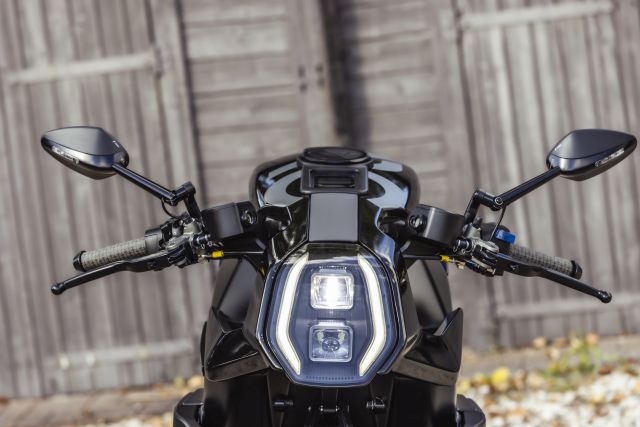
The rear suspension on our test bike was a little harsh around town and the comfort was not great, but, again, this can be personalised—and the riding position is not too radical.
I presume most wealthy owners are not going to go touring, although the claimed range of 436 km is impressive. ARC admits, in the real world it is more like 320 km or 193 km if it is doing high-speed stuff. After a few hours, you will be about ready for a break and the 40 minutes it takes to recharge will be a welcome relief.
Cruise control is standard and so long as you plan your journey with a DC fast charger along the way, you could cover some decent miles on the ARC. Sadly, I suspect most will only be used for short journeys. The range and battery use are displayed on the dash, which is on top of the dummy fuel-tank. This also shows speed and riding mode, etc. Ignoring the price for a moment, this is my only real criticism, because it is hard to see, especially when the sunlight is directly behind you. However, in the future, all the information you will need should be in the head-up display in the ARC Zenith helmet.
While the overall design and spec—Brembo brakes, Öhlins suspension, BST wheels—are fixed, each Vector is tailored to the rider and their demands. Colours, finish, the position of the pegs… almost everything can be matched to the owner’s personal taste. Some customers have requested black Öhlins springs instead of yellow, some have even gone for a wood-like finish on the top section—there are few limits.
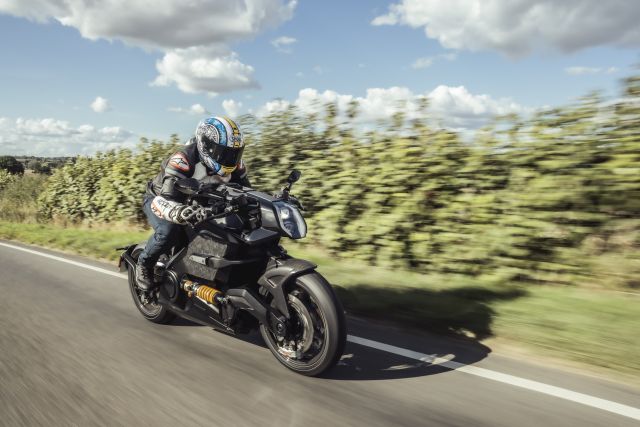
The big talking point and what makes this bike even more unique is the human machine interface (HMI). This is a direct connection between the bike and the rider. A Zenith helmet will feature a head-up display (HUD) just like a fighter pilot’s. The helmet will also have an integrated rear-facing camera, which will automatically highlight anything detected in the blind spot via the HUD. Rider modes will have the option to be voice-activated from the Wi-Fi helmet.
The standard bike has three rider modes, which reduce power delivery and torque; Rain 40 per cent, Eco 70 per cent, Road 100 per cent. The lean-sensitive traction control, once developed, will work in partnership with these modes. Once the HMI is competed, there will be a further three modes—Urban, Sport, and Euphoric—which will interact with the helmet and clothing.
Furthermore, ARC is working on the Origin Jacket, which is part of the HMI experience. For example, in Urban mode the jacket will alert the rider to dangers; in Sports mode it will give the rider feedback on their riding, taking information from the IMU or transmitting how much TC is being activated. Euphoric Mode will let you play music through the haptics—all currently in development but close to final production.
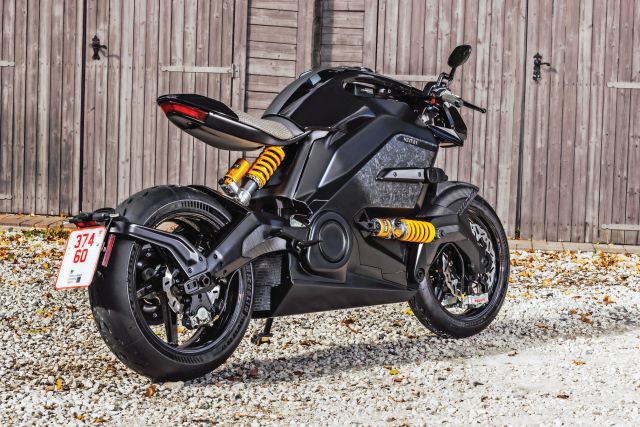
The top-spec model, with specialist machined parts and programmed for HMI, will set you back by £110,000 (Rs 1 crore). Yes, we are talking Supercar money. There is no hiding the fact the ARC Vector is expensive and £90,000 (Rs 81.70 lakh) is only the starting price. Our test bike, the AE model, which is in final development to interact with the jacket and helmet, will be priced at £110,000 (Rs 1 crore). However, this is a bespoke hand-made electric superbike for a very limited lucky few, so, perhaps, it is best to think of the Vector in terms of supercar money, like a Ferrari or Bugatti.
Each bike is built at the company’s HQ and tailored to the rider’s size and weight. Potential owners are invited to the factory for a fitting. Pegs can be moved and fitted to match the rider, like a made-to-measure suit. Customers are then invited to choose colours, material, and final specification. No two bikes are the same and you can let your imagination run wild. If you want wood-finish bodywork as on an old skateboard, that is not a problem.
If you have the money, pricewise, Ducati’s limited-edition Superleggera V4 costs £90,000 (Rs 81.70 lakh), producing 234 hp from its petrol V4 and tops the scales at only 152.2 kg with a race kit. And if you want hub-steering, you could look at the supercharged Bimota Tesi H2 at £60,000 (Rs 54.50 lakh).
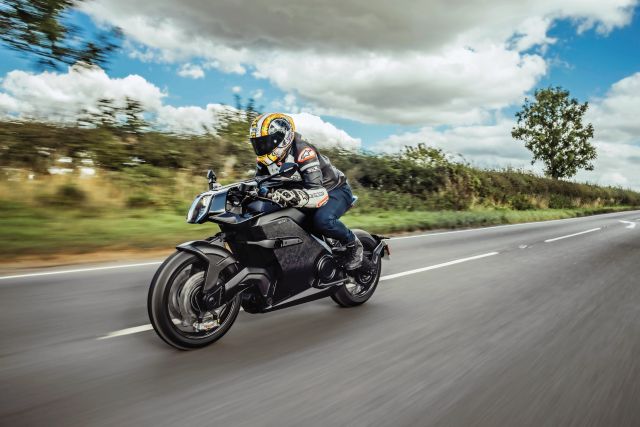
Mark Truman and his team deserve a lot of credit. The ARC Vector is a gigantic project, one that started from nothing and has become a motorcycle that is unique, stunning, and very special. Its very existence is a huge achievement.
Painstaking development of the HCS front end has delivered a system that allows some dive, has quick steering, and gives great feedback. They have built a bike that uses the main battery as its chassis, with both carbon swing-arm bolting directly to it and a carbon mud-guard that is a structural part of the bike. There is also the forthcoming HMI interaction with bespoke futuristic jacket and helmet. No longer constrained by the conventional architecture of petrol bikes, they have truly moved the dial in terms of design and engineering.
And, on top of all this, it works as a motorcycle. It feels deceptively light once on the move, turns well, gives feedback, has excellent brakes—this is one fast electric superbike. Our test machine was a little firm and the initial throttle response a smidge urgent, but this can all be ironed out. The clocks are a little disappointing and you obviously cannot ignore the eye-watering price.
But for some, price is not an issue and those privileged few who manage to grab an ARC Vector will be buying something special, not only in looks but in design and performance. No wonder the order books are already filling up fast.

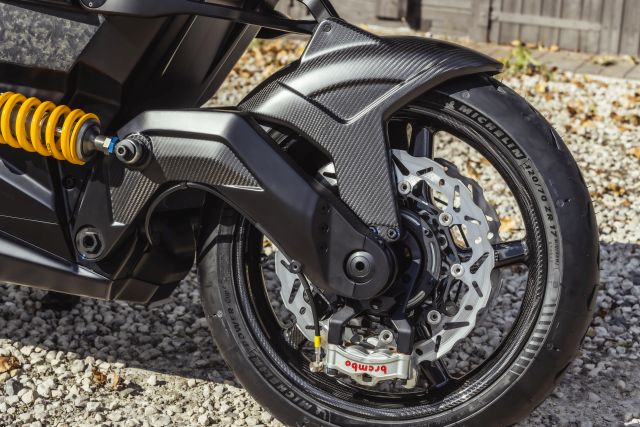
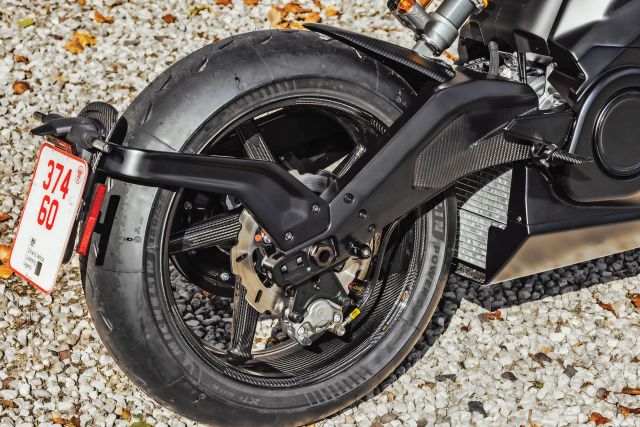
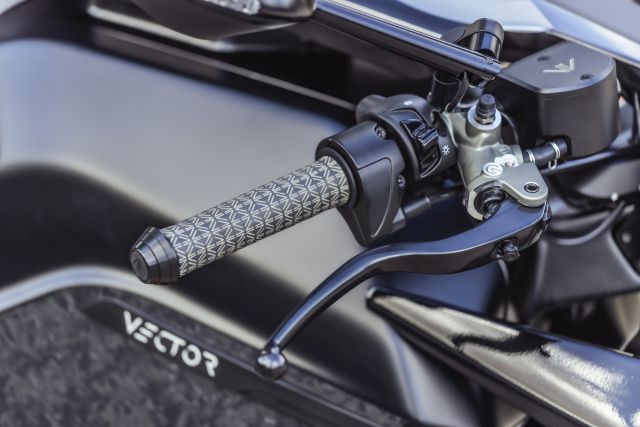

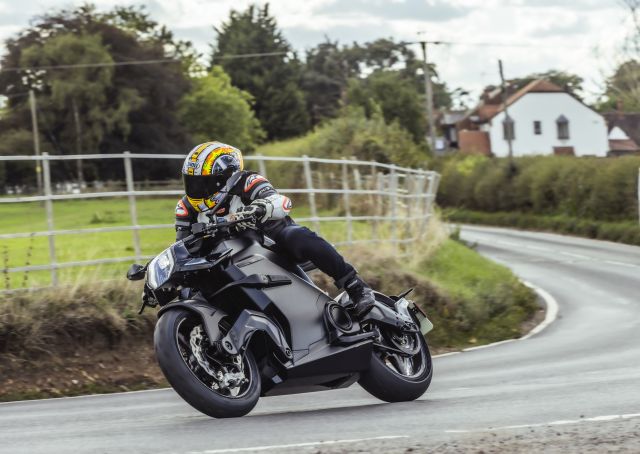
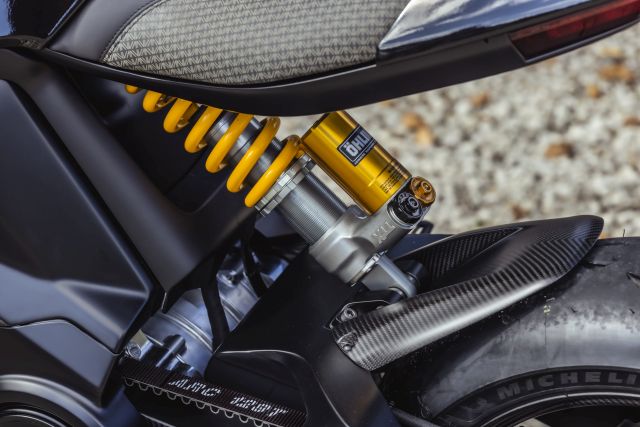
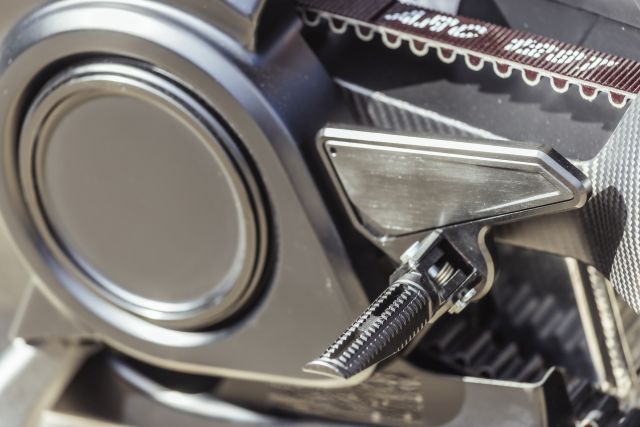
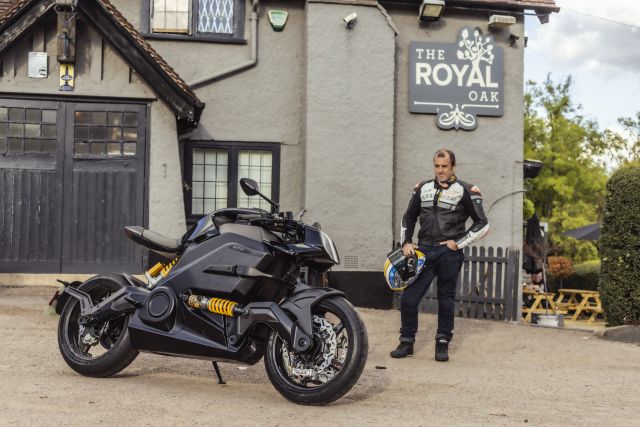

Leave a Reply